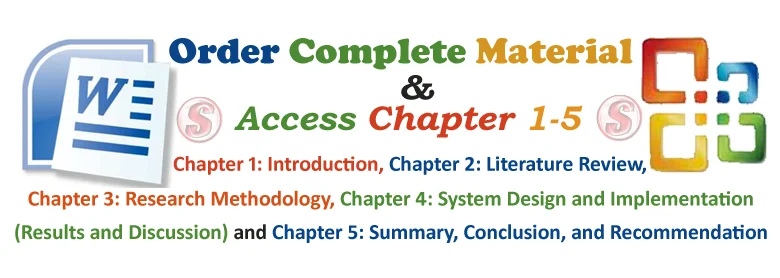1.1 Introduction
Road Traffic Offence refers to any act that causes or liable to cause violation of road traffic rules and regulations. Road traffic offence is an action taken or action not taken that violates road safety rules and regulation. Traffic violation is a serious offence, which could endanger the lives of drivers and pedestrians. Because of the violations, real time problems including increased travel time, excess fuel consumption, fatigue, and increased pollution can be observed. In many countries it is very common for drivers to pay the fine, get issued traffic tickets, or even get arrested due to violations and charges. Recently, there is an increase in the number of vehicles on roads and is rapidly increasing day by day, which thus causes profoundly clogged streets thereby, encouraging the violators to break the rules. The main intention is to save time. These violators leave in a common conception that red signals, wearing helmets and other rules are a waste of time and fuel, impaired hearing, gives helmet hair and many more reasons.
As a prelude to other parts of this study, this chapter will discuss the background upon which this study was initiated, the statement of problems that led to this study, the Aim and Objectives of the study. Others are Significance of the study, Scope of work, Limitations of the Study and Definition of technical terms.
1.2 Background of Study
Road traffic violation rules differ from one country to another. In India traffic violations rules follow the Motor Vehicle Act 1988, passed by the Lok Sabha with strict and heavy penalties for violation of traffic rules (India, 2021). The concept of smart city began in the early 1990s with the rising of new technologies of mobiles and wireless networks; in addition to the huge development in the internet technologies such as semantic web and internet of things (Adler and Blue, 2018). Real-time traffic signal control is an integral part of modern Urban Traffic Control Systems aimed at achieving optimal utilization of the road network. Providing effective real time traffic signal control for a complex traffic network could be challenging. Signal system operation is further complicated by the recent trend that views traffic signal system as a small component of an integrated multimodal transportation System.
According to Trackschoolbus (2021), the traffic violations are categorized into two types as minor and major violations. Minor violations include, parking violations in an unauthorized space or no parking zone, handicapped zone or at trespassing areas. Major violations include more serious issues such as reckless driving and accident issues (Trackschoolbus, 2021).
The intelligent transportation system is considered as one of the major applications of the smart city. Our proposed system may compose of many technologies such as: Video Image Detection Systems and Mobile phone tracking (Boselly and Ulberg, 2013). Using these technologies with artificial intelligence could be creating an intelligence tracking system that take a decision of tracking offenders. There are many goals that could be achieved through this proposed system; such as changing the traffic conditions to reduce the amount of trip time and the time that cars spend idling which decreases the fuel consumption thus will cause decrease the amount of carbon monoxide emissions (Ahmed, 2012). Intelligent Transport Systems and Services could be defined as the integration of information and communications technology with transport infrastructure, vehicles and users. The increase in urbanization and traffic congestion create an urgent need to operate our transportation systems with maximum efficiency (Ibeh, 2016).
Optimization of traffic signals and other control devices for the efficient movement of traffic on streets and highways constitutes a challenging part of the advanced traffic management system of intelligent transportation system (Rameshwar et al. 2011). For a large-scale traffic management system, it may be difficult to assess the state of traffic network and to tell whether it is flowing smoothly. Over the past few years, multi-agent systems have become a crucial technology for effectively exploiting the increasing availability of diverse, heterogeneous and distributed information sources.
One of the main objectives of the Federal Road Safety Commission (FRSC) is the enforcement of road traffic rules and regulations in Nigeria. In this regard the Road Safety Commission was established in 1988 (Federal Road Safety Commission, 2008). Other associated with road transportation include: hazardous environment, robbery on highways, traffic crimes and traffic offenders, traffic lawlessness, lack of database for vehicle regulation, lack of database for traffic offenders, bad record keeping of road users, and lack of road maintenance culture.
Traffic System Computer technology is one of the achievements made by man. Its benefit has seen man being able to solve some of his immediate problems. It has opened the door to a large number of important applications that were not economically feasible in the past. Its applications ranges from automating devices in most offices where most tasks are highly automated to on-line computer control of industrial and commercial process for which this project is concerned.
1.3 Statement of the Problem
Investigation revealed that the manual checking of vehicles violating rules is tedious. This requires a system which detects and distinguishes a variety of traffic offenses. For example signal hop, over speeding, riding without a helmet. Also such a system should effectively monitor the traffic to enforce law and order in the city.
The road traffic offence information sector should not be left out, because an increase in the use of improved information management technology has greater advantages, where process of collecting, processing, storage, retrieval and dissemination of road traffic offence information for the purposes of planning, controlling, coordinating and decision making are not in tone with times.
The existing system of road traffic offence gives no room for pictorial identification of offenders. Hence wrong person could be accused. The system is decentralized making road traffic offence information manipulation and accessibility of the database difficult. Also the system has no room for pictorial diagram display of the offence committed, as well as the penalty of offence as an evidence to facilitate prosecution. Hence the offender often sees himself as being compelled to accept responsibility.
1.4 Aims and Objectives of Study
The aim of the study is to Design and Implement Road Traffic Offence Information Management System. In achieving this aim, the following specific objectives were laid out as follows to design and develop an application that will:
- Centralized road traffic offence information database where road traffic offence information can be easily accessed by all authorized user.
- Store and maintain accurate database record of traffic offenders.
- Keep track of traffic crimes and traffic offenders.
- Reduce error in offenders’ identification, as lots offenders escape offence due to wrong identification (pictorial identification) during and after documentation which makes prosecution of offenders’ difficulty.
- Displays a pictorial sketch or diagram of an offence committed as clear evidence to offenders’ crime. This can also be tendered in court during prosecution..
1.5 Significance of Study
Road traffic Information Management System provides road traffic information that is needed to manage road traffic organizations efficiently and effectively. Road traffic information management and the information it generates are generally considered essential components of prudent and reasonable business decisions. With the growth in information technology, the study offers numerous benefits to the Federal Road Safety Commission and other organizations that deal with road traffic offence information management. There are many reasons why a research on the road traffic offence information management system should be made at this time. The chief reasons being that:
Road traffic offence information management system uses integrated database-stores all road traffic offence information in a single database. This enhances fast, timely and secured accessibility and sharing of road traffic offence reports for the agency’s decision making
Identifying road traffic offenders with their pictorial images will aid the agency in authentic documentation and avoid prosecuting wrong persons.
Often times, Offenders deny ever committing a crime they are apprehended for due to absence of diagram sketch/pictorial display showing the crime committed. Displaying offender crime for the offender to see enhance the agency’s credibility and makes FRSC road traffic information reports reliable.
1.6 Scope of Study
The study focuses on the Design and Implementation of Road Traffic Offence Information Management System using Federal Road Safety Corps (FRSC) as a case study.
1.7 Limitations of the Study
During the course of this study, many things militated against its completion, some of which are:
- Time Constraint: The time frame given to accomplish this project was very short due to school academic calendar and it was carried out under pressure which made the researcher not to implement some necessary features.
- Research material: availability of research material is a major setback to the scope of the study.
- Frequent power failure: This made the researcher append more money on fuel to ensure sustainable power.
- Financial Constraint: Insufficient fund tends to impede the efficiency of the researcher in sourcing for the relevant materials, literature or information and in the process of data collection (internet).
1.8 Definition of Terms
Road Traffic Offence: This phrase refers to any act that causes or liable to cause violation of road traffic rules and regulations. Road traffic offence is an action taken or action not taken that violates road safety rules and regulation. For instance not reporting a road traffic accident is a road traffic offence.
Travel: To be on a journey, often for pleasure or business, and with luggage; to go from one place to another.
Bus: A large motor vehicle carrying passengers on a fixed route.
Rate: To assign or to be assigned a particular rank or level.
Information: Facts or knowledge provided or learned.
Postponement: An act of arranging for (something) to take place at a time later than that first scheduled.




